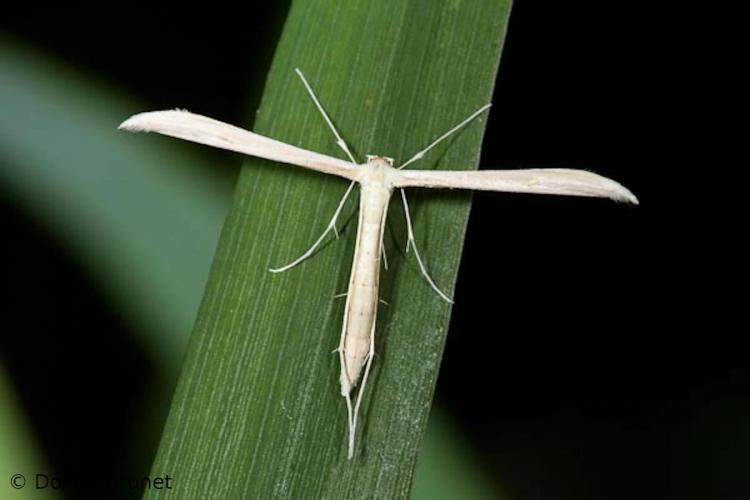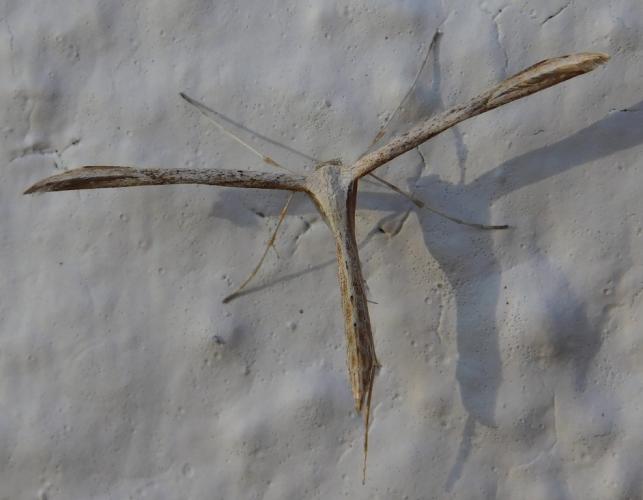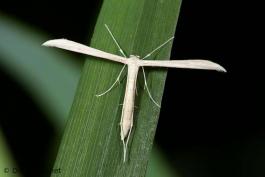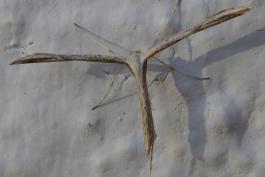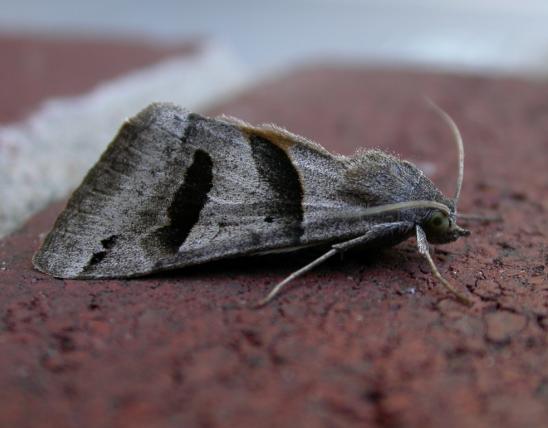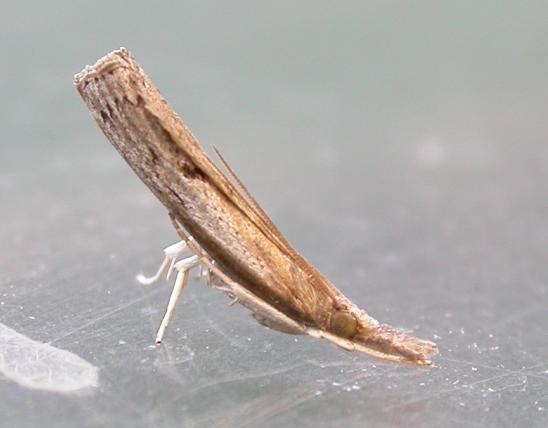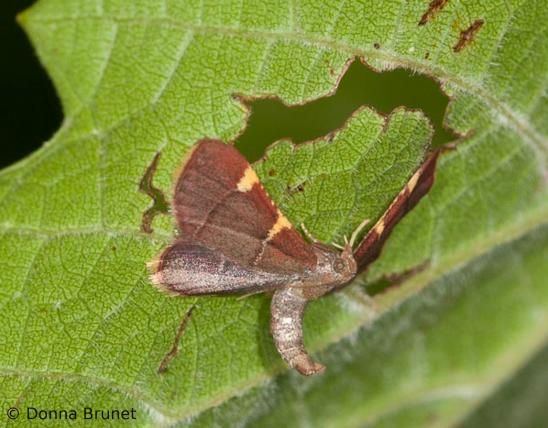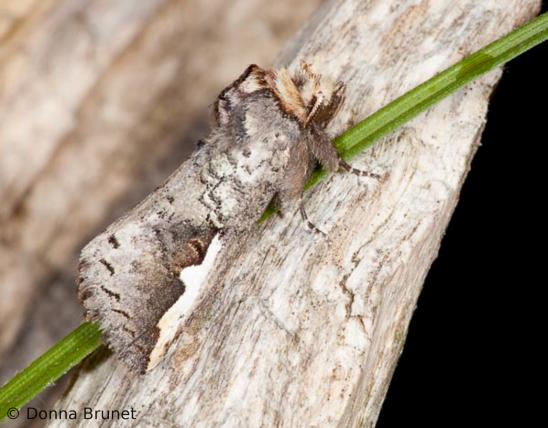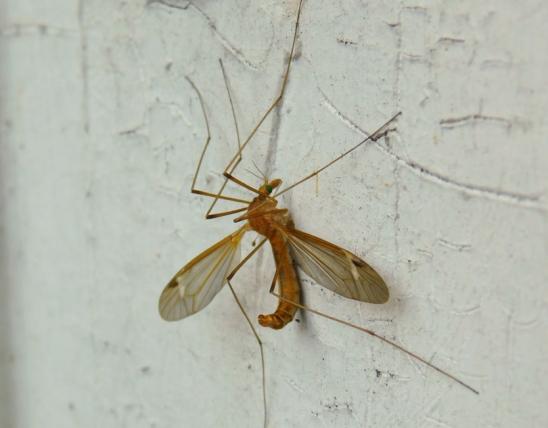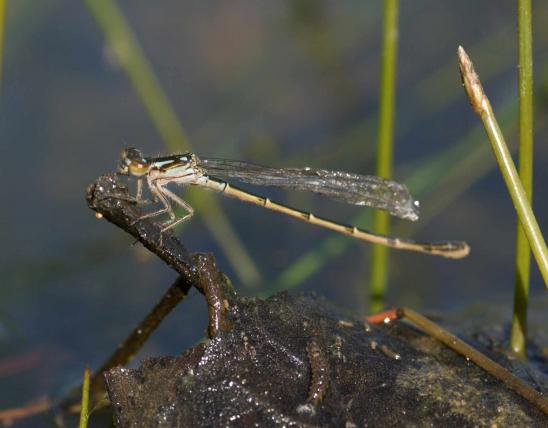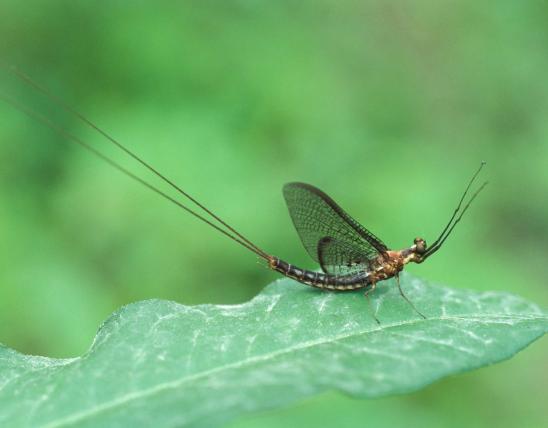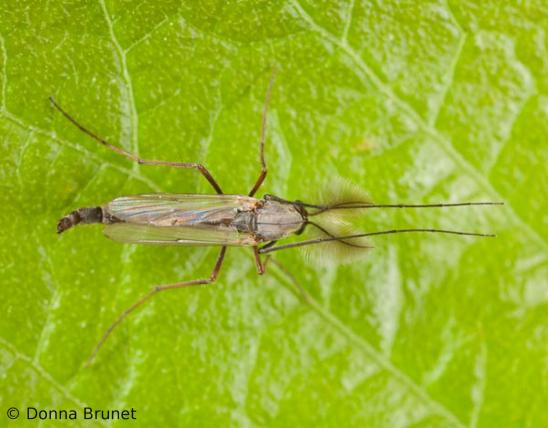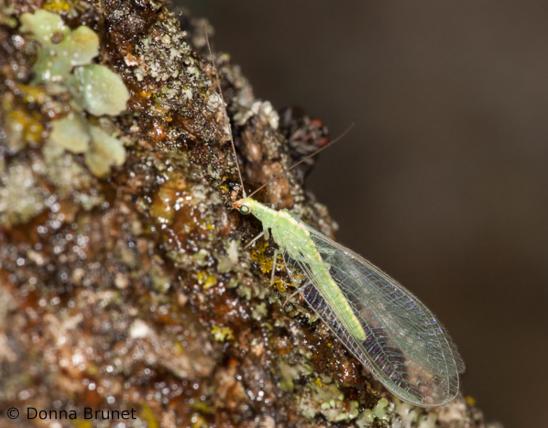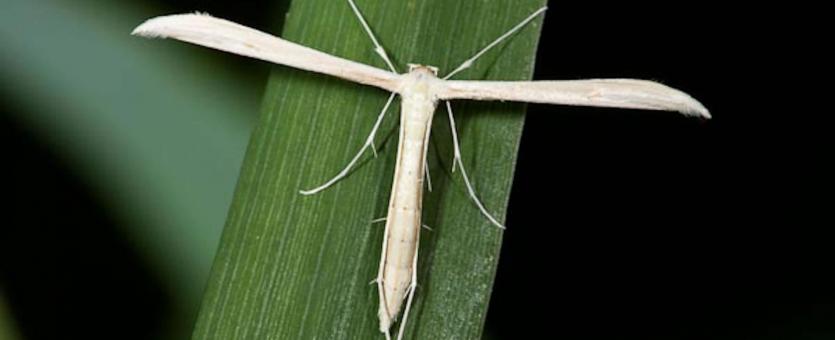
Plume moths are instantly recognizable by their T-shaped silhouette and muted shades of tan and brown. At rest, the moths hold their wings tightly rolled, but when they are spread, the deeply cleft slits in the wing margins that create the feathery plumes are visible. These moths are slim and delicate-looking, with a long, thin abdomen and extremely long, fragile legs. Their flight is weak and fluttery. It can be hard to distinguish among the many species of plume moths.
Caterpillars are variously colored and are commonly equipped with long, fine hairs or bristles.
Wingspan: ½–1½ inches.

Statewide.
Habitat and Conservation
Plume moths are commonly attracted to lights at night but are also often seen resting on nonwoody plants or flowers during the day. It is common to see them resting on the sides of buildings in the morning, near porchlights that had attracted them the previous night.
Food
Caterpillars feed on flowers and leaves, either constructing leaf shelters or boring into stems. Moths in this family use over 20 plant families, with many species selecting plants from the sunflower family (including ragweed and thistles), wild grapes, or morning glories. Adults feed on nectar and pollen from flowers.
Life Cycle
Plume moths have been known to fly in Missouri from February through December, but they are most commonly seen from spring through fall. The life cycle varies among species, with some species overwintering as adults and thus appearing in early spring, some caterpillars pupating below ground or in ground litter, some pupating “nakedly,” attached to a surface the way many butterflies do, and others forming cocoons. There can be several broods each year.
Human Connections
When the caterpillars chew the leaves of garden plants such as geraniums and snapdragons, they can become pests, though they rarely cause much trouble in our state. Some species of plume moths are being used as a biological control on invasive plants.
Ecosystem Connections
The caterpillars are herbivores that graze on vegetation. Plume moths are apparently relished by many predators (such as birds) that hunt by sight — we can deduce this by the remarkably convincing camouflage of both larva and adults, which resemble small sticks or pieces of grass.
Consider how little plume moths match our usual concept of "moths": they have thin and delicate, not big and chunky bodies; they often fly during the day; they hold their wings in an odd position. It is a reminder that the order Lepidoptera, which embraces all the moths and butterflies, is huge and diverse, with many, many moth groups that are as different from each other as butterflies are from other moths.
